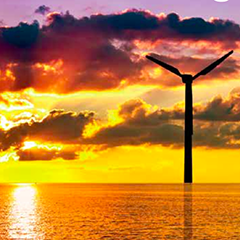Europe’s energy leaders are in agreement – more offshore wind is absolutely vital if binding targets are to be met. There’s just one slight issue – who’s going to pay for it? PES investigates…
The European Union has committed to a legally binding target to meet 20% of its energy consumption through renewable energy by 2020. To achieve this, there is an expectation that 34% of electricity will need to be generated by renewables. In the longer term, the EU is considering targets for 2030 as part of the commitment to decarbonise the economy by 80% to 95% by 2050.
Offshore wind has significant generation potential in Europe with increasingly large-scale sites identified as suitable for offshore development and benefiting from a favourable wind resource. Offshore wind is therefore expected to play a significant role in meeting these targets.
As required by the EU’s Renewable Energy Directive, each Member State submitted a National Renewable Energy Action Plan (NREAP) stating how it intends to meet these targets and what role each renewable technology will play. Under these plans, Member States indicated that they will deploy 43.3 GW of offshore wind capacity by 2020.
In 2011 the European Wind Energy Association (EWEA) published scenarios for offshore wind energy deployment in Europe, expecting 40 GW of installed offshore wind energy capacity by 2020. Offshore wind deployment in Europe is currently lagging behind the NREAP targets by an average of 14%. By June 2013, 6 GW of generation capacity was installed across Europe, suggesting that the over 9 GW target set out in the NREAPs for end 2013 will not be reached.
The French and German markets in particular are significantly behind their deployment targets. Their NREAP targets for 2012 were 670 MW and 790 MW respectively, but France has yet to bring any offshore wind on line and deployment in Germany was 385.3 MW in June 2013.




























